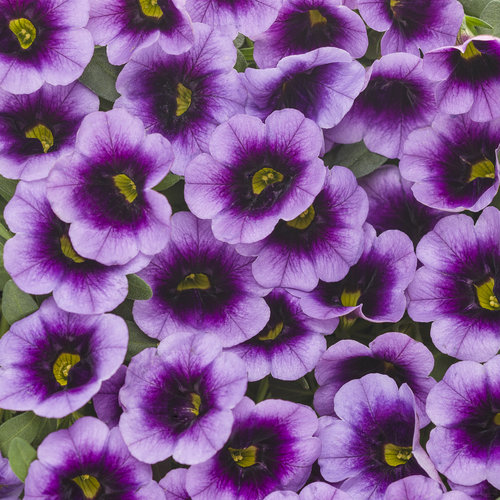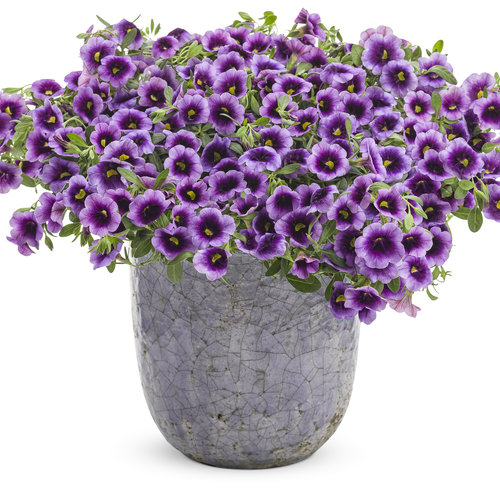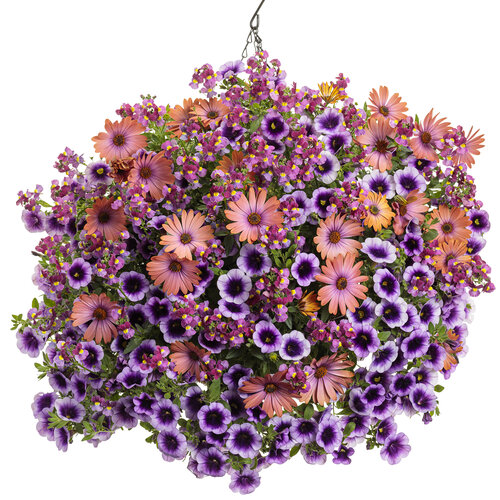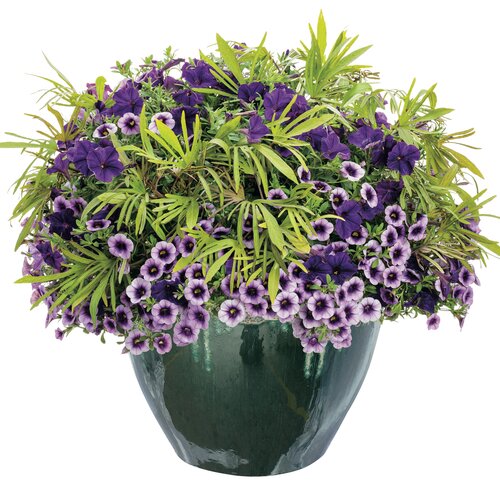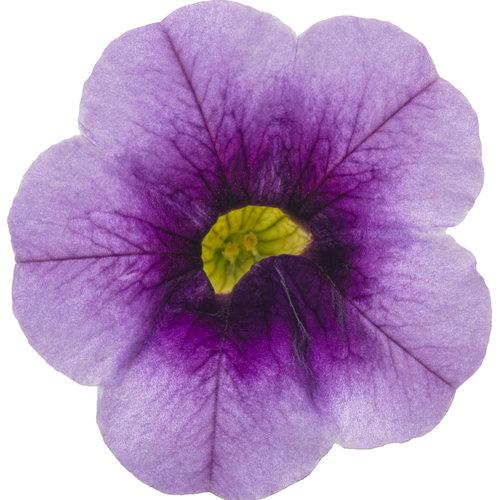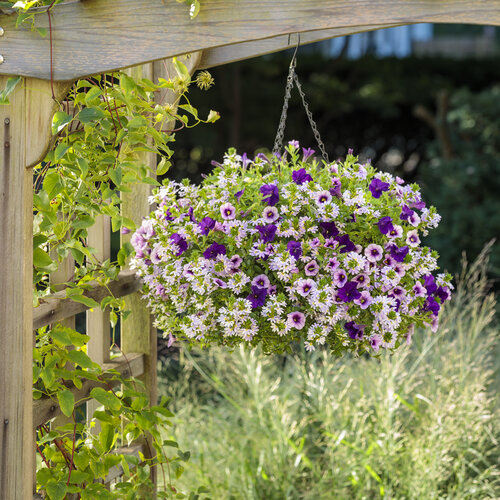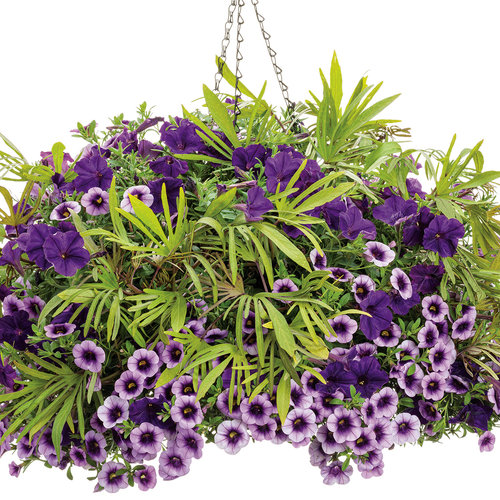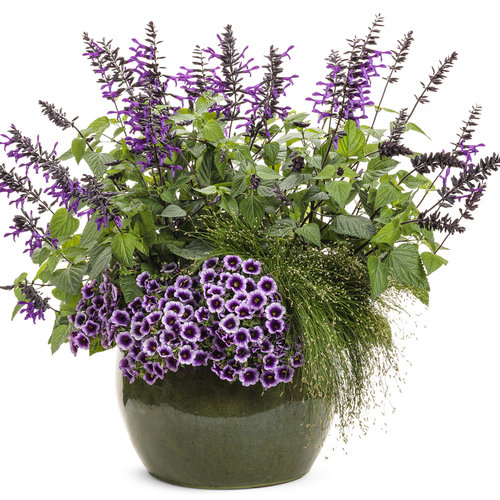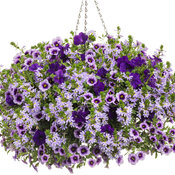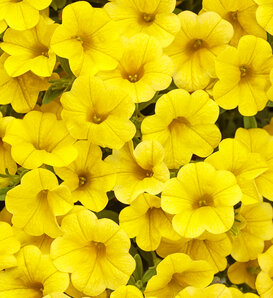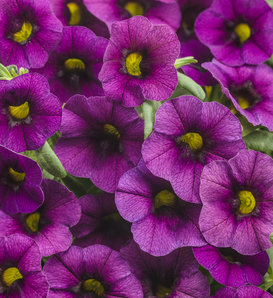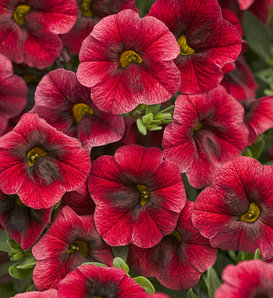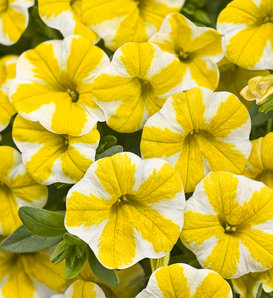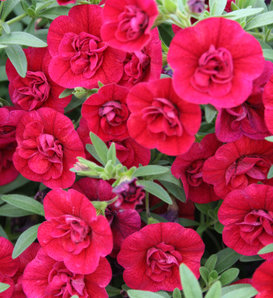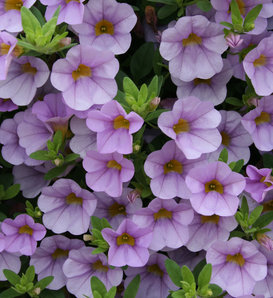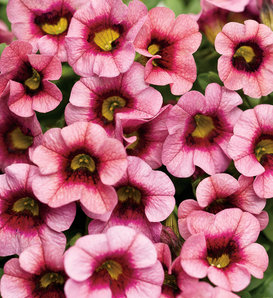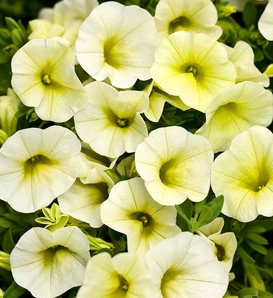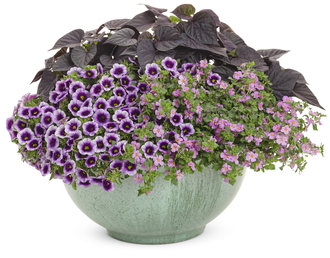These were the perfect size and color for my balcony railing planters. They flowered prolifically from the time I planted the young small plants just after the last frost, until I removed them at the end of November so I could prepare for winter/spring. A good companion variety would be Tangerine Punch, which grew at about the same rate and size. I also planted them with Lemon Slice and Over Easy which were even more vigorous.
Superbells® Blue Moon Punch™ Calibrachoa hybrid
- Part Sun to Sun
- Spring
- Summer
- Fall
-
Details
6 - 12 Inches8 - 12 Inches12 - 24 Inches15cm - 30cm20cm - 30cm30cm - 61cmFeatures
By the time hard frost comes in fall, this plant will have showered your garden with thousands of blooms. The petite flowers grace cascading plants that are great in combinations, mono-hanging baskets and in raised beds with great drainage.
Best SellerContinuous Bloom or RebloomerLong BloomingFall InterestHeat TolerantDeadheading Not NecessaryAttracts:HummingbirdsCharacteristics
Plant Type:AnnualHeight Category:ShortGarden Height:6 - 12 Inches 15cm - 30cmTrails Up To:30 Inches 76cmSpacing:8 - 12 Inches 20cm - 30cmSpread:12 - 24 Inches 30cm - 61cmFlower Colors:PurpleFlower Shade:Silvery lavender with a deep purple eyeFoliage Colors:GreenFoliage Shade:GreenHabit:Mounding TrailingContainer Role:SpillerPlant Needs
Light Requirement:Part Sun to SunThe optimum amount of sun or shade each plant needs to thrive: Full Sun (6+ hours), Part Sun (4-6 hours), Full Shade (up to 4 hours).
Maintenance Category:EasyBloom Time:Planting To Hard FrostHardiness Zones:9a, 9b, 10a, 10b, 11a, 11bWater Category:AverageNeeds Good DrainageUses:ContainerUses Notes:Calibrachoa need good drainage to perform well so they are best grown in containers of all kinds. Hanging baskets, window boxes and upright containers are all great for use with Superbells®. If you happen to have great drainage in your landscape beds or utilize raised beds, then Calibrachoa will do find when planted in the landscape. However, most of us will have better luck when using containers.
Maintenance Notes:When planting Calibrachoa I often give the plants a slight trim, using a sharp pair of scissors or pruning shears. While not a necessary step, it will increase branching and may help your plants look even fuller.
Calibrachoa are usually easiest to grow in containers. If the roots are kept too wet it can lead to root rot diseases. In containers, allow the top of the soil to dry before watering again. If your plant is wilting even though the soil is still damp you likely have a root rot problem.
Calibrachoa can be fantastic in-ground plants, but only if they are planted in well-drained soil. Raised beds would be a good choice for planting Calibrachoa in the landscape. In the ground they shouldn't need much additional water unless conditions are very dry. Proper watering is key to growing good Calibrachoa.
The plants are low-maintenance with no deadheading needed. They will do best if fertilized on a regular basis. Calibrachoa can be sensitive to both high and low pH. If your plants have been growing for a while and then begin to look a bit tired and not so good there are several things to try. If the foliage is yellow there are two possible causes. If you haven't been fertilizing regularly they could simply be hungry and in need of fertilizer. Feed them using a well-balanced (look for something with an n-p-k ratio near 24-12-17) water soluble fertilizer. If you have been fertilizing regularly with a well-balanced fertilizer and the foliage is still turning yellow, it is probably because the pH range in your soil has gotten a bit high or low. The most common impact of this is that Iron can no longer be taken up by the plant, even if it is available in the soil.
The common form of Iron used in fertilizer is sensitive to pH changes. If you think pH is your problem you can either try to lower (or raise) the pH or you can simply apply Chelated Iron, which is available at a wider pH range and should help your plants turn green again. You may also be able to find Iron in a foliar spray (which means you spray it on the foliage rather than applying it to the soil) which can also help your plant turn nice and green again. Stop by your favorite garden center and they should be able to help you choose a product to use. Or use our Proven Winners Water Soluble fertilizer, which has the chelated iron.
As the season goes on the plants can sometimes just start to look open and not as good. This can happen even if they are being watered and fertilized correctly. Fortunately this is very simple to fix. Grab a sharp pair of scissors or pruning shears and give the plants an all over trim. This will cause them to branch out more and should stimulate new growth and flowering, especially if you fertilize right after trimming them back. Just like your hair looks a lot better after a trim, your plants often will too. You will sacrifice flowers for a few days, but the plants should shortly come back flowering more than ever. I will usually give my Superbells a trim back in late July or early August. Should your plants have a few unruly stems that are longer than everything else or sticking our oddly, you can trim these stems back at any time. Calibrachoa are very forgiving when it comes to trimming.
An application of fertilizer or compost on garden beds and regular fertilization of plants in pots will help ensure the best possible performance.
-
5 Reviews
554321Browse reviews from people who have grown this plant.-
Jersey Ray, New Jersey, United States, 2 years ago
-
Wow! I wish I could show you a photo of what I've got right now! Doing beautifully (Aug. 1, Chicago area), covered with large (for calibrachoa) flowers! * I planted these in a large pot, maybe 20" diameter. Big pots' soil dries out slower than smaller pots' soil. * It's about 8 feet from the northwest side of the house. So it gets little/no morning sun but lots of hot afternoon sun. * Put an empty pot upside down on the bottom, to give great drainage AND to cut down on the amount of expensive potting soil to fill the pot. * Used Miracle Grow potting soil (forget which one, regular or moisture control). I believe I let some old soil remain on the lower 1/3 of the pot. (This stuff's expensive, especially when you fill a large pot.) * Gave it some Miracle Gro Shake 'n Feed Rose and Bloom pellets in the soil when it was planted; * and, when it was first planted, (brand??) liquid stuff to encourage root growth. I must have done something right; the plants are going great! Not sure why, but the other calibrachoa variety in the pot, isn't nearly as big. But I'll comment on it elsewhere.
Sharon Sivertsen, Illinois, United States, 5 years ago -
Lots of beautiful, eye-catching flowers! Love it and would plant it again!
Jennifer Winship, British Columbia, Canada, 6 years ago -
Loved these! bought a few for my hanging baskets and they did very well in part shade. I am in zone 7 just outside the Smoky Mountain National park in TN. The pop of color was very charming.
Rebekah, Tennessee, United States, 6 years ago
41 More colors
11 Recipes
8 More Recipes- Magical MysteryRecipe
What you'll need:
-
1
-
1
-
1
-
- Creative PowersRecipe
What you'll need:
-
1
-
1
-
1
-
- Bloom MoonRecipe
What you'll need:
-
2
-
2
-
1
-
-



